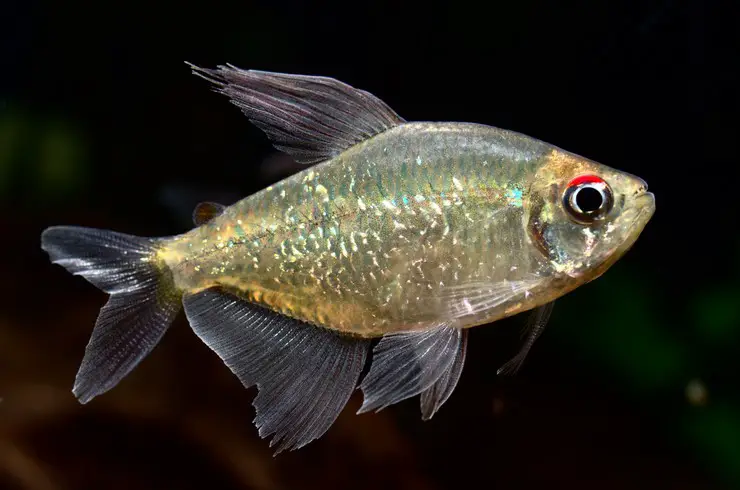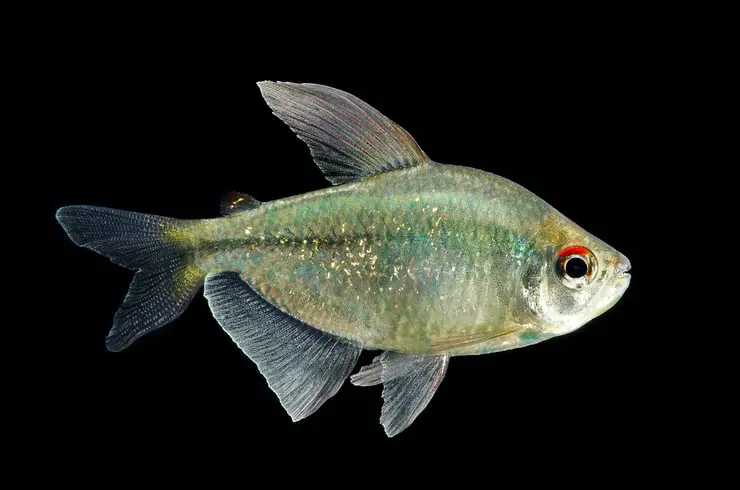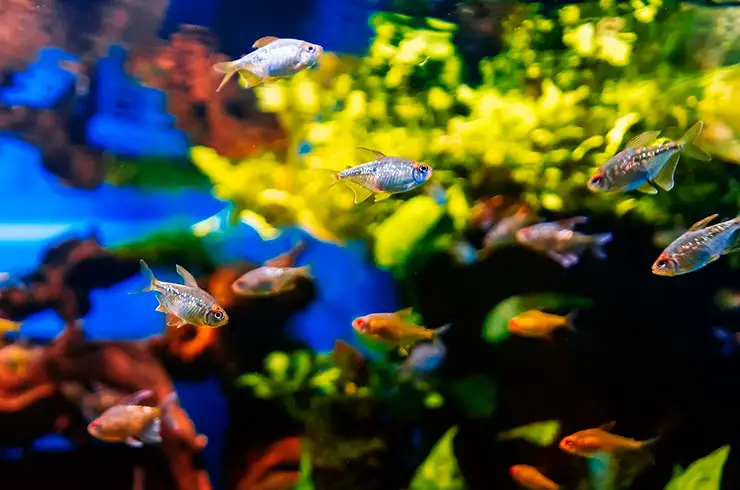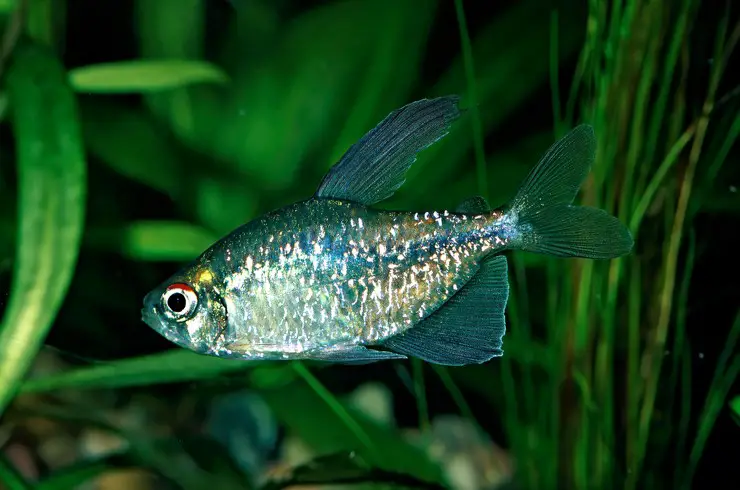It is difficult to find fish more suitable for keeping in a dense herbalist than tetras. These peace-loving schooling species are incredibly beautiful, active, and, importantly, unpretentious. In our article, we will tell you about one of the most beautiful tetras, which got its name after an expensive gem.
General information
Diamond tetra (Moenkhausia pittieri) is a freshwater ray-finned fish from the Kharacin family. It got its name for the unusual ability of the scales to reflect light in a certain way, as a result of which the fish shines like a diamond after cutting. This type is considered one of the most beautiful tetras, but there is one small nuance: the tetra shows all its beauty only in adulthood. Her fry is gray, nondescript, and, as a rule, does not attract attention. However, if the fish is planted in suitable conditions, then very soon you will be amazed at its beauty and fall in love with it without memory.
The diamond tetra is not difficult to maintain. The fish loves soft water and dim lighting. With a certain skill, you can get offspring from her.
Appearance
The diamond tetra is a small fish no more than 6 cm long. It has an almost diamond-shaped body, the head is pointed and has a small mouth and large eyes, the upper part of which is colored red.
The tail is two-bladed. The dorsal fin is small but elongated; the anal fin extends almost from the middle of the body to the tail. All fins are gray or bluish. A small adipose fin is located between the dorsal and caudal fins – a characteristic feature of the Kharacin family.
The main body color is gray, with a yellowish or reddish tint. The back is gray-blue, the abdomen is silvery. The scales of a diamond tetra are large, each scale is capable of reflecting light, which gives the fish the magical glow of a diamond. On the sides of the body from the middle towards the tail, a barely noticeable blue stripe stretches.
Habitat
For the first time, diamond tetra was found more than 100 years ago in Venezuela. They caught her in the Valencia mountain lake, which is located between two mountain ranges. Later, the fish was found in nearby reservoirs.
A typical biotope in which this tetra life is a slow section of a river, a backwater, or a lake, densely overgrown with plants.
Unfortunately, natural fish populations are in a deplorable state. This is due to the pollution of the lake as a result of human activity: wastewater from industrial production and agriculture gets here.
Care and maintenance
The diamond tetra is a typical schooling fish, so it should be kept only in groups of 6 or more individuals. This, firstly, will reduce stress in the fish (when left alone, they turn pale and may refuse food), and secondly, it will allow you to observe the natural behavior of tetras, where males will show themselves in their best form in front of females.
The recommended volume of an aquarium for a flock of diamond tetras is 60 liters. It is best to arrange it in a natural style that resembles natural habitats: put sandy or small pebble soil on the bottom, install natural driftwood. It is useful to add a Tetra ToruMin conditioner to the water. It contains natural peat extract and will give the water a light “tea” shade that will appeal to diamond tetras.
Fish love dense thickets of aquatic plants. Don’t forget about floating species. Tetras look most impressive in subdued light.
Tetra prefers clean water, so you should take care of a suitable filter, only the output flow should not be made too strong. You will also need a compressor and heater. The latter will automatically maintain a comfortable temperature for the fish. The lighting shouldn’t be too bright.
A 20% water change in the aquarium should be done once a week. Most often, water from the central water supply is used for changes. It should not be poured into the aquarium without preliminary preparation, because the chlorine and heavy metals contained here can be dangerous to your pets. Tetra AquaSafe conditioner will help you instantly make the water suitable for fish life, just add 5 ml of the product for every 10 liters of freshwater. After that, you can safely pour it into the aquarium.
Compatibility
Diamond tetras are distinguished by their docile, peaceful character, so they can be kept with any commensurate fish without any problems. Other tetras, neons, thorns, viviparous species, small irises, rasbora, apistograms, and gourami are perfect as neighbors. There will be no difficulties with catfish corridors and ancistrus.
The tetra is incompatible with large aggressive fish, as well as with overly active ones. For example, Sumatran barbs can sometimes pinch the fins of tetram.
Feeding the diamond tetra
Feeding a diamond tetra will not be difficult for you. This omnivorous fish eats high-quality dry food with pleasure. It is better to refuse live and frozen ones – they do not contain the entire complex of nutrients, and can often serve as a source of infection in the aquarium.
The following foods are perfect for this tetra:
- TetraMin Flakes is a universal basic food for all tropical fish. It is made from more than 40 components, contains a complex of vitamins and a prebiotic. The flakes stay on the surface for a long time and it is very convenient for such fish as tetras to eat it.
- Tetra Micro Crisps – This food has been specially formulated for ornamental species with small mouths. Chips contain animal and vegetable products and natural color enhancers.
- TetraPRO Algae Multi-Crisps will provide your fish with the necessary amount of vegetable protein, which is important in the diet of the diamond tetra. Otherwise, pets can take on the delicate parts of living plants.
Remember to feed the fish several times a day with a portion of food that will be eaten completely in a few minutes.

